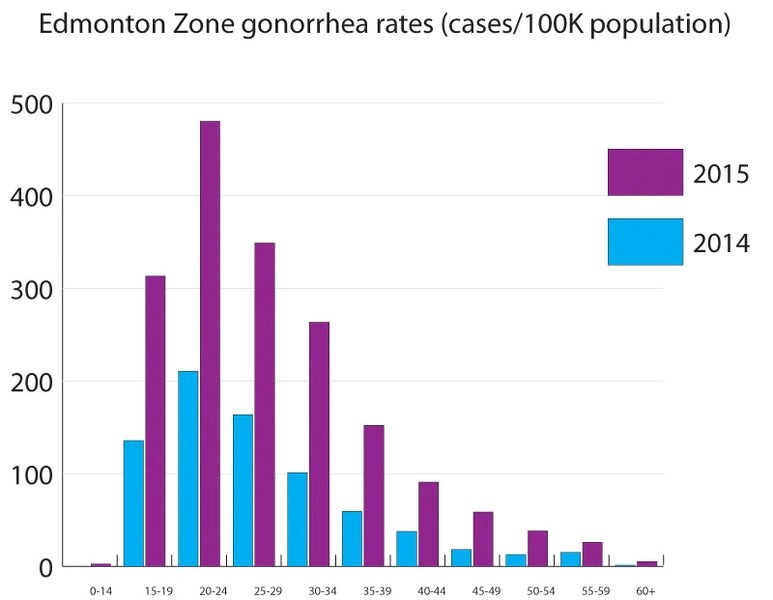Social media tools may be exacerbating the spread sexually transmitted diseases by facilitating anonymous sexual encounters, but it’s our curriculum that's truly to blame, a local sexual health education expert says.
Earlier this week Alberta’s chief medical officer, Dr. Karen Grimsrud, revealed that gonorrhea and syphilis rates have reached “outbreak levels.”
Gonorrhea is up 80 per cent and syphilis has doubled from 2014. At 82 cases/100,000 population, gonorrhea rates are the highest they’ve been since the late 1980s.
She blamed the recent spike on online dating apps, which “enable people to communicate quickly to arrange anonymous sexual encounters,” making it harder to track down partners for testing.
Alberta Health Services confirmed the contribution of online dating apps to the spread of STIs is being observed both on the ground and in recent studies.
“Our clinicians have told us loud and clear that they are hearing from patients that social media has enabled easier and more frequent casual hook-ups,” said Dr. Gerry Predy, Senior Medical Officer of Health.
The use of online applications and websites was the most frequently mentioned method of meeting sexual partners amongst confirmed gonorrhea cases in the Edmonton Zone last year, according to ongoing epidemiological work by the Public Health Agency of Canada.
Preliminary 2016 data, currently being reviewed by AHS, shows that 25 per cent of people with syphilis who provided AHS with information on their partners reported meeting on the internet or via social media.
Kristopher Wells, a St. Albert resident and director of programs and services for the University of Alberta’s Institute for Sexual Minority Studies and Services, says that current STI rates are more a symptom of Alberta’s poor sexual health curriculum.
“Apps are not the culprit here,” said Wells. “The lack of information is the problem.”
Whether going to a bar or swiping through Tindr “it’s about having the knowledge to be able to protect yourself and your partner and engage in sexual activity in a responsible way,” now and in the future.
As the numbers show, although rates amongst teenagers and young adults remain highest, it’s seniors and middle-aged adults who saw the most drastic increases. In Edmonton, gonorrhea rates doubled for 15 to 29 year olds, while they tripled amongst 45 to 55 year olds and nearly quadrupled amongst those over 60.
“I still get individuals who get into trouble in their 50s,” said Cory Hrushka, a certified sex therapist in Edmonton. “They get an incurable STI because they say ‘no one ever told me.’”
Newly single from divorce or widowed, older people who get back in the saddle are sometimes out of touch with new STI information or never received a proper education in the first place.
Wells highlighted the need for comprehensive sexual education: non-judgmental, age-appropriate, scientifically based and, most importantly, mandatory discussions around sexual health and reproduction, issues of consent and LGBTQ realities.
“The fact that we legislate the right of parents to opt out of learning about sexual health in our school only does a further disservice. We shouldn’t be surprised by the kinds of numbers that we’re seeing,” he said.
Wells said it’s not about excluding parents (who are identified as the primary sexuality educator in the current curriculum) from their child’s education, it’s about providing information on a range of sexual behaviours and their associated risks without judgment.
He linked higher reported rates of STIs among men having sex with men (MSM) – 11 times higher for gonorrhea than the provincial rate for all males, and 86 per cent of all syphilis cases – to stigmatization and lack of proper education.
“Schools, the primary vehicle to talk about these issues, are completely silent. It’s as though those identities don’t exist,” said Wells.
Until barriers to education are removed (not the apps), Alberta should continue to expect these high STI rates, he said.




